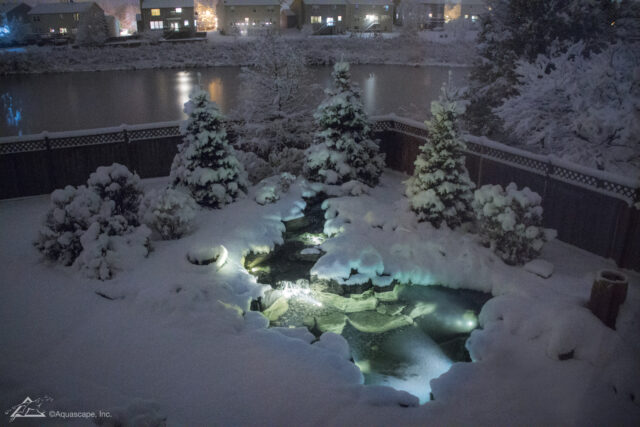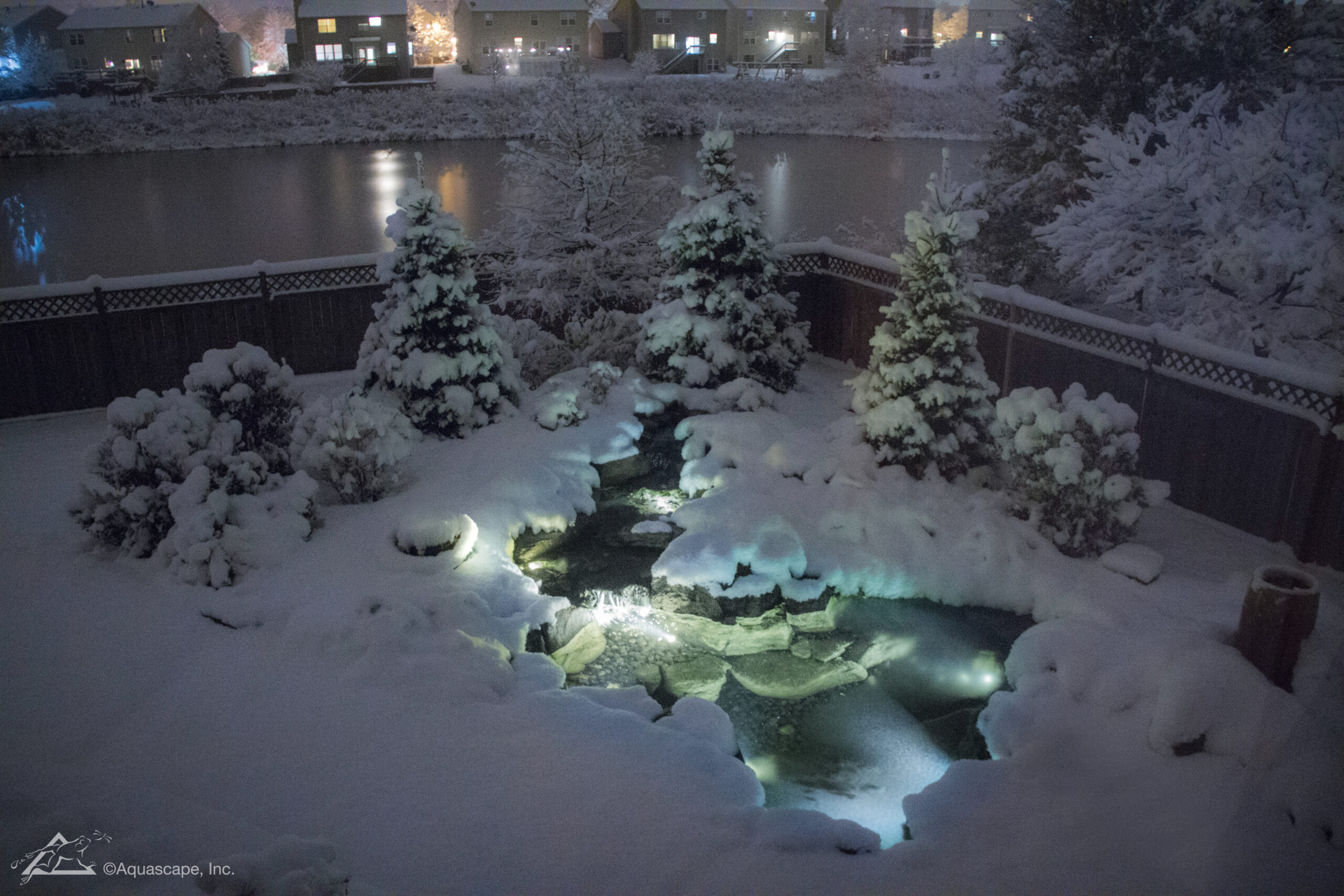Caring for your pond in Southern Oregon can be a daunting task in the winter. In this article we will cover some tips and techniques so that your pond is maintained properly without fish loss or damage. Our biggest challenges are freezing temperatures and predators.

Protecting your pond from freezing temperatures
Protecting your pond from freezing temperatures is an essential part of winter pond care in Southern Oregon. If the top of the water in your pond freezes over it can be detrimental to the plants, fish, and other organisms living in the pond. This is because it doesn’t allow gas exchange at the surface of the water.
Oxygen becomes depleted and your fish can suffocate. So to prevent your pond from freezing over, you can use a pond heater, floating de-icer, or use a pond pump to disturb the top level of the water. These devices work by keeping a small area of the pond open and circulating, allowing gases to escape and preventing the water from freezing.
If you use a pond pump make sure the pump is sitting on a shelf and not on the bottom of the pond. It’s important to follow the manufacturer’s instructions when using these devices, and to regularly check on them to make sure they are functioning properly.
Maintaining proper water levels
During colder months evaporation decreases, but freezing temperatures create ice. Ice will form on slower moving areas of fountains and waterfalls. The ice will remove water from the pond much quicker than you think. Also, if the ice forms on the waterfall and begins to reroute the water over the liner, you will have a massive loss in water. It is vital to check the level of the water consistently. Check ice formations as well.
Winterizing your pond equipment
Some people will choose to remove the waterfall pump during the winter and completely close down their feature. In Southern Oregon we rarely have extreme winters where this is necessary. I typically recommend keeping your feature running because aeration from the waterfall is generally all you need to keep a hole in the ice. But if you choose to close down your feature you are going to want to remove the waterfall pump. You should also disengage the check valve.
Place your pump in a bucket of water in a frost free location. This is because keeping the seals wet extends the life of the pump. The check valve keeps water in your plumbing. So if you do not disengage the check valve then your plumbing can crack from frozen water.
Winter Fish Care
Stop feeding your fish once the temperature gets below 50 degrees F.
Fish will begin to hibernate and can not digest food properly. Feeding your fish can be detrimental to their health in cold temperatures.
Adding a fish cave will allow the fish to hibernate out of sight from predators.
Debris
If you are removing the pump you should cover your pond with a net to reduce the amount of leaf debris. Leaves will stain your pond with tannins, add nitrogenous waste, and cause algae problems in the spring time. Tannins aren’t by themselves bad, but they are unsightly to most people.
Also be aware of broken branches falling into the pond. If you have foliage around the pond, then trimming in the fall will eliminate some debris as well.
Overall, caring for your pond in the winter is much easier once you have a basic plan in place. These are all actionable steps to help you navigate the stress of what to do in winter.
If you have a pond in Medford, Grants Pass, Ashland, Roseburg, or Eugene, Oregon, and you need help winterizing or any care please do not hesitate to reach out.

